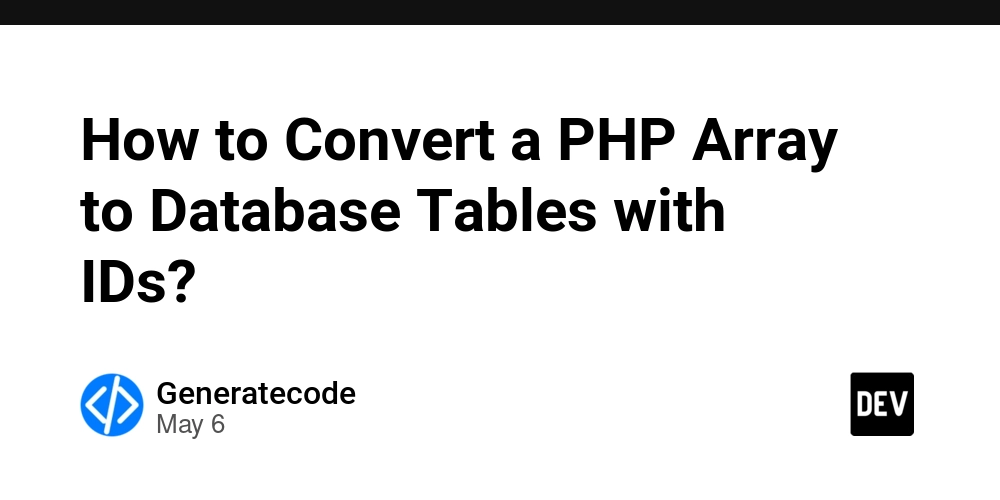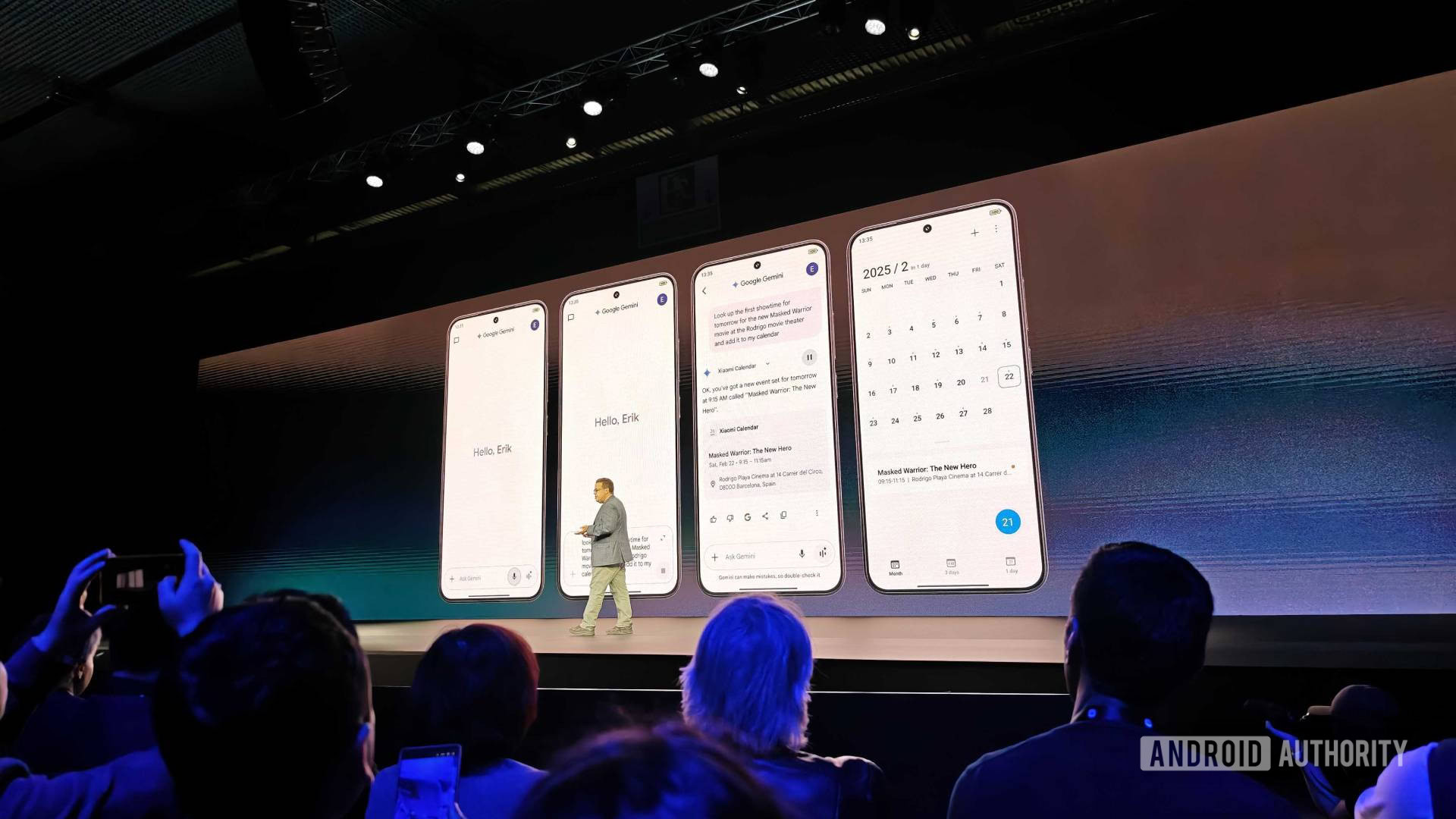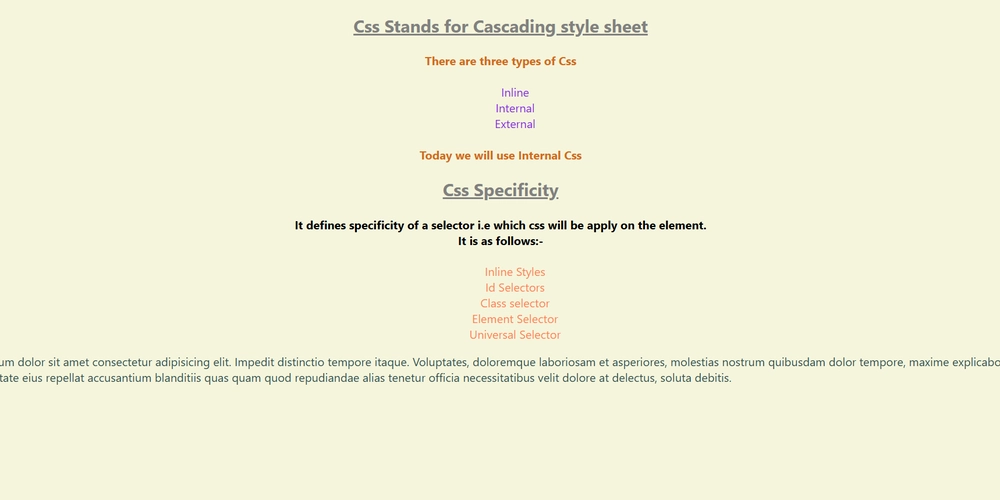How to Convert a PHP Array to Database Tables with IDs?
Introduction In this article, we'll address the challenge of converting a PHP array configuration, similar to a YAML config file, into structured database tables complete with self-generated IDs. This approach will help you manage configurations like categories, settings, and values efficiently in your database. The given example demonstrates a nested associative array called $settings, which contains configurations for various categories and their associated parameters. We will show how to extract this information and generate corresponding database tables. Understanding the Array Structure The Example Array Here’s a version of your array with clearer formatting: $settings = [ 'basic' => [ 'installation_type' => [ 'type' => '["single","cluster"]', 'description' => 'bla blah', 'readonly' => false, 'hidden' => false, 'trigger' => null, 'default' => 'single' ], 'db_master_host' => [ 'type' => 'ip', 'description' => 'Database hostname or IP', 'default' => 'localhost' ], // other parameters ], 'provisioning' => [ 'snom' => [ 'snom_prov_enabled' => [ 'type' => 'switch', 'default' => false ], // other parameters ], // other categories ], ]; This configuration allows for easy management of various settings that can eventually be stored in a database. Why It's Important to Structure Your Database When converting array data into database tables, it's crucial for the design to reflect the relationships between the configurations. This allows for efficient data retrieval and maintains integrity. The primary tables we will create include: Category Table: To define the categories (like basic, provisioning). Setting Table: To define the individual settings across categories. Value Table: To store default values associated with each setting. Step-by-Step Solution to Convert Array to Database Structure Step 1: Define Your Database Tables Before populating the database, let's define the structure. Here's a simple outline of our tables: Categories Table: id, parent, name, order Settings Table: id, catId, name, type, description, order Values Table: id, setId, default Step 2: Initialize Arrays for Database Structure You will need to create empty arrays to hold your final structured data: $categories = []; $settings = []; $values = []; Step 3: Extract Data from the Input Array Now, you want to loop through the $settings array, generating IDs based on your logic: $categoryId = 1; $settingId = 1; $valueId = 1; foreach ($settings as $catName => $catProps) { // Add category $categories[$catName] = [ 'id' => $categoryId, 'parent' => 0, 'name' => $catName, 'order' => $categoryId ]; $categoryId++; foreach ($catProps as $setName => $setProps) { // Add settings $settings[$setName] = [ 'id' => $settingId, 'catId' => $categories[$catName]['id'], 'name' => $setName, 'type' => $setProps['type'], 'description' => $setProps['description'] ?? '', 'order' => $settingId ]; $settingId++; // Add values $values[$setName] = [ 'id' => $valueId, 'setId' => $settings[$setName]['id'], 'default' => $setProps['default'] ?? null ]; $valueId++; } } Step 4: Inserting Data into Database After populating the arrays, you’ll need to insert this data into your database tables. You can use a simple PDO or MySQLi connection to achieve this, here’s an example using PDO: $pdo = new PDO('mysql:host=localhost;dbname=your_database', 'username', 'password'); foreach ($categories as $cat) { $stmt = $pdo->prepare("INSERT INTO categories (id, parent, name, order) VALUES (:id, :parent, :name, :order)"); $stmt->execute($cat); } foreach ($settings as $set) { $stmt = $pdo->prepare("INSERT INTO settings (id, catId, name, type, description, order) VALUES (:id, :catId, :name, :type, :description, :order)"); $stmt->execute($set); } foreach ($values as $val) { $stmt = $pdo->prepare("INSERT INTO values (id, setId, default) VALUES (:id, :setId, :default)"); $stmt->execute($val); } Conclusion With this approach, you effectively convert a PHP array configuration into a well-structured database format, allowing for scalable and efficient management of settings. As your application grows, you'll find this method simplifies your configuration management while maintaining a clear and organized database structure. Frequently Asked Questions How do I retrieve the settings from the database later? To retrieve settings, you can execute SQL queries to select from each of the tables based on the categories or individual settings. What if my setti

Introduction
In this article, we'll address the challenge of converting a PHP array configuration, similar to a YAML config file, into structured database tables complete with self-generated IDs. This approach will help you manage configurations like categories, settings, and values efficiently in your database.
The given example demonstrates a nested associative array called $settings, which contains configurations for various categories and their associated parameters. We will show how to extract this information and generate corresponding database tables.
Understanding the Array Structure
The Example Array
Here’s a version of your array with clearer formatting:
$settings = [
'basic' => [
'installation_type' => [
'type' => '["single","cluster"]',
'description' => 'bla blah',
'readonly' => false,
'hidden' => false,
'trigger' => null,
'default' => 'single'
],
'db_master_host' => [
'type' => 'ip',
'description' => 'Database hostname or IP',
'default' => 'localhost'
],
// other parameters
],
'provisioning' => [
'snom' => [
'snom_prov_enabled' => [
'type' => 'switch',
'default' => false
],
// other parameters
],
// other categories
],
];
This configuration allows for easy management of various settings that can eventually be stored in a database.
Why It's Important to Structure Your Database
When converting array data into database tables, it's crucial for the design to reflect the relationships between the configurations. This allows for efficient data retrieval and maintains integrity. The primary tables we will create include:
-
Category Table: To define the categories (like
basic,provisioning). - Setting Table: To define the individual settings across categories.
- Value Table: To store default values associated with each setting.
Step-by-Step Solution to Convert Array to Database Structure
Step 1: Define Your Database Tables
Before populating the database, let's define the structure. Here's a simple outline of our tables:
-
Categories Table:
id,parent,name,order -
Settings Table:
id,catId,name,type,description,order -
Values Table:
id,setId,default
Step 2: Initialize Arrays for Database Structure
You will need to create empty arrays to hold your final structured data:
$categories = [];
$settings = [];
$values = [];
Step 3: Extract Data from the Input Array
Now, you want to loop through the $settings array, generating IDs based on your logic:
$categoryId = 1;
$settingId = 1;
$valueId = 1;
foreach ($settings as $catName => $catProps) {
// Add category
$categories[$catName] = [
'id' => $categoryId,
'parent' => 0,
'name' => $catName,
'order' => $categoryId
];
$categoryId++;
foreach ($catProps as $setName => $setProps) {
// Add settings
$settings[$setName] = [
'id' => $settingId,
'catId' => $categories[$catName]['id'],
'name' => $setName,
'type' => $setProps['type'],
'description' => $setProps['description'] ?? '',
'order' => $settingId
];
$settingId++;
// Add values
$values[$setName] = [
'id' => $valueId,
'setId' => $settings[$setName]['id'],
'default' => $setProps['default'] ?? null
];
$valueId++;
}
}
Step 4: Inserting Data into Database
After populating the arrays, you’ll need to insert this data into your database tables. You can use a simple PDO or MySQLi connection to achieve this, here’s an example using PDO:
$pdo = new PDO('mysql:host=localhost;dbname=your_database', 'username', 'password');
foreach ($categories as $cat) {
$stmt = $pdo->prepare("INSERT INTO categories (id, parent, name, order) VALUES (:id, :parent, :name, :order)");
$stmt->execute($cat);
}
foreach ($settings as $set) {
$stmt = $pdo->prepare("INSERT INTO settings (id, catId, name, type, description, order) VALUES (:id, :catId, :name, :type, :description, :order)");
$stmt->execute($set);
}
foreach ($values as $val) {
$stmt = $pdo->prepare("INSERT INTO values (id, setId, default) VALUES (:id, :setId, :default)");
$stmt->execute($val);
}
Conclusion
With this approach, you effectively convert a PHP array configuration into a well-structured database format, allowing for scalable and efficient management of settings. As your application grows, you'll find this method simplifies your configuration management while maintaining a clear and organized database structure.
Frequently Asked Questions
How do I retrieve the settings from the database later?
To retrieve settings, you can execute SQL queries to select from each of the tables based on the categories or individual settings.
What if my settings change frequently?
Consider implementing a caching mechanism or a configuration reload method to accommodate dynamic changes without needing database updates.
This technique not only organizes your data effectively but also aids in quickly adapting to future changes in your application’s requirements.






































































































































































![[The AI Show Episode 145]: OpenAI Releases o3 and o4-mini, AI Is Causing “Quiet Layoffs,” Executive Order on Youth AI Education & GPT-4o’s Controversial Update](https://www.marketingaiinstitute.com/hubfs/ep%20145%20cover.png)














































































































































































-Assassin's-Creed-Shadows---How-to-Romance-Lady-Oichi-00-06-00.png?width=1920&height=1920&fit=bounds&quality=70&format=jpg&auto=webp#)
































































































 Stolen 884,000 Credit Card Details on 13 Million Clicks from Users Worldwide.webp?#)






























































































![Chrome 136 tones down some Dynamic Color on Android [U]](https://i0.wp.com/9to5google.com/wp-content/uploads/sites/4/2023/03/google-chrome-logo-4.jpg?resize=1200%2C628&quality=82&strip=all&ssl=1)















![Apple Shares Official Teaser for 'Highest 2 Lowest' Starring Denzel Washington [Video]](https://www.iclarified.com/images/news/97221/97221/97221-640.jpg)

![Under-Display Face ID Coming to iPhone 18 Pro and Pro Max [Rumor]](https://www.iclarified.com/images/news/97215/97215/97215-640.jpg)


































































































